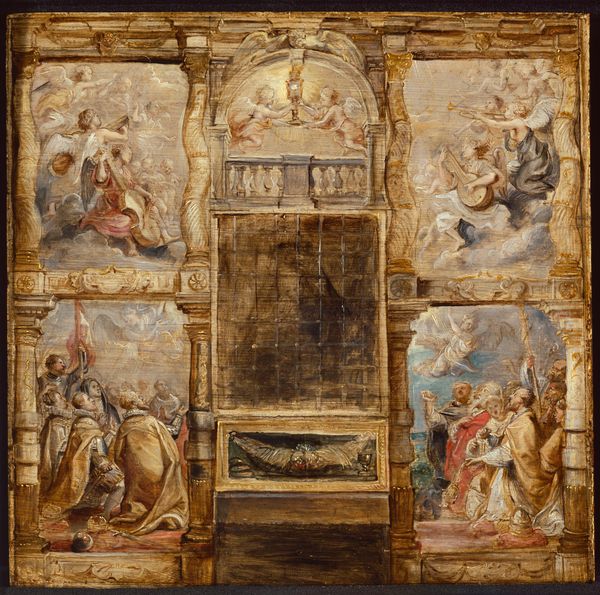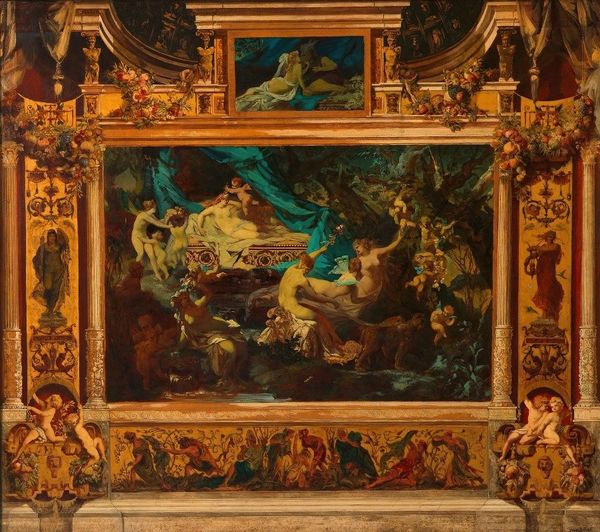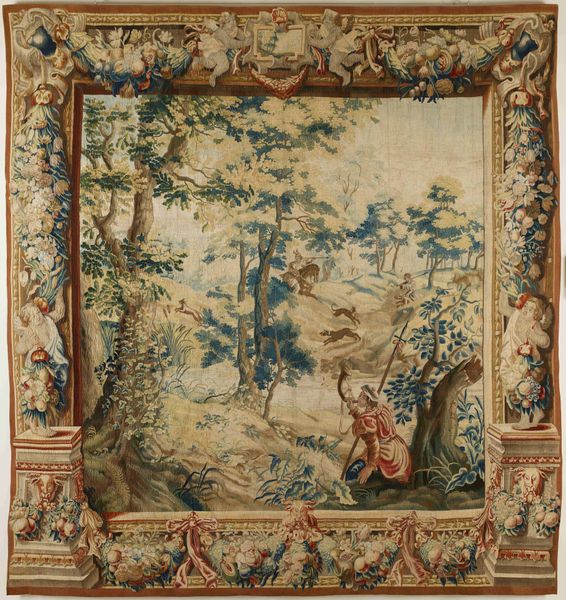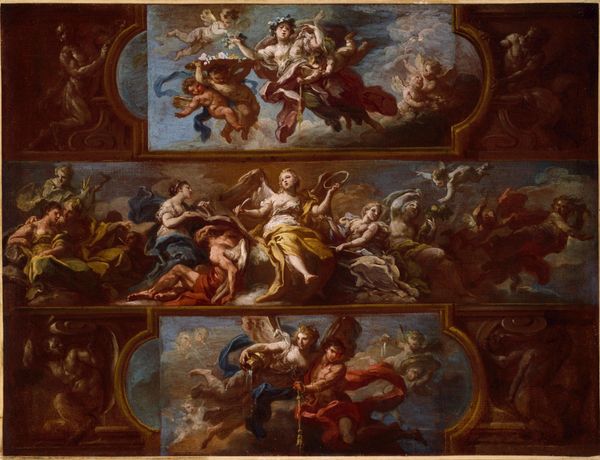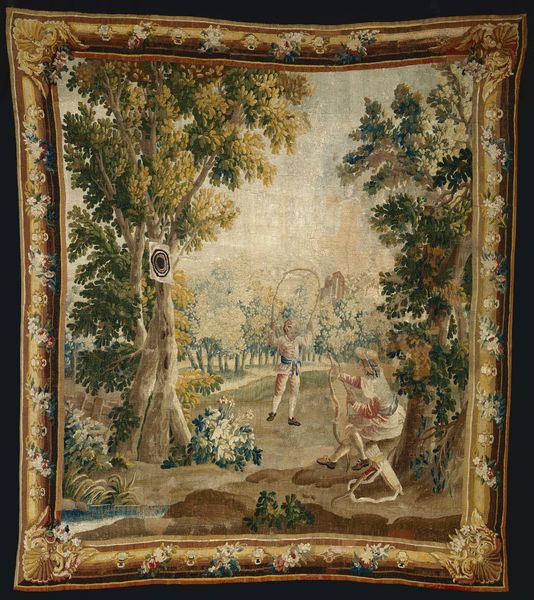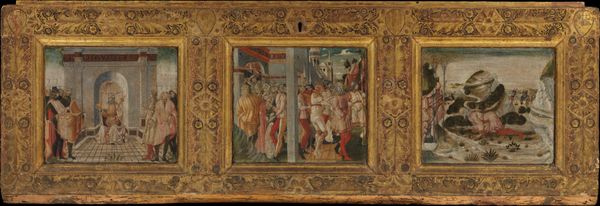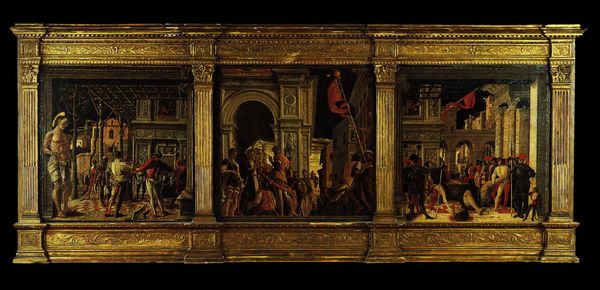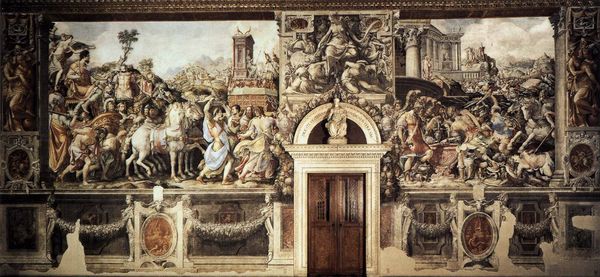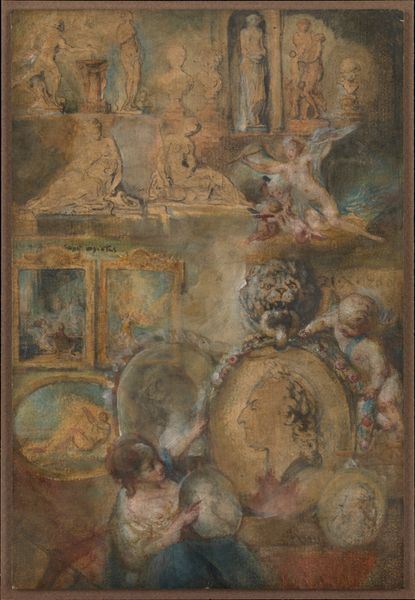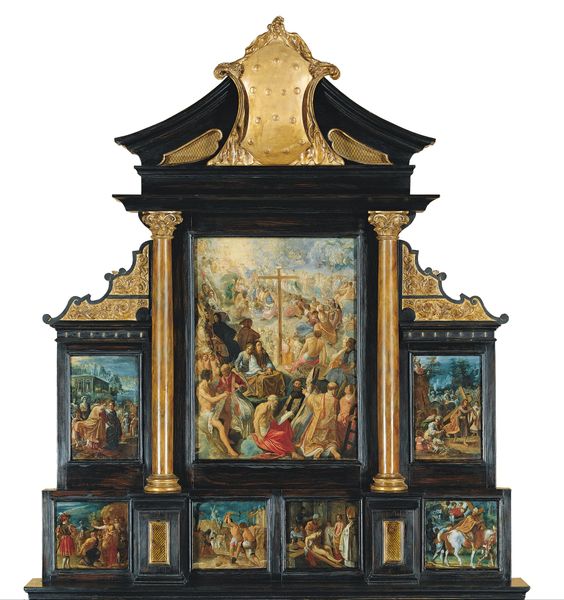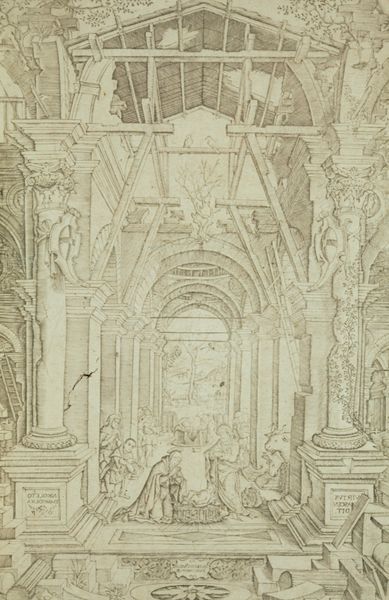
Humanity: The Golden Age depicting three scenes from the lives of Adam and Eve; The Silver Age depicting three scenes from Orpheus: the Iron Age depicting three scenes from the lives of Cain and Abel 1886
0:00
0:00
gustavemoreau
Musée National Gustave Moreau, Paris, France
Dimensions: 33.6 x 25.5 cm
Copyright: Public domain
Curator: This impressive multi-paneled oil painting by Gustave Moreau, completed in 1886, is entitled *Humanity: The Golden Age depicting three scenes from the lives of Adam and Eve; The Silver Age depicting three scenes from Orpheus: the Iron Age depicting three scenes from the lives of Cain and Abel.* It is currently held at the Musée National Gustave Moreau in Paris. Editor: My immediate feeling is of a stained-glass window but rendered in fleshy tones and sepia dreams. The vignettes pulse with a pre-Raphaelite longing and a hint of morbid fantasy. It feels like peering into the mind of someone obsessed with origins and decay. Curator: Right. What stands out to me are the conditions of production of these paintings. The ornate frame itself, for instance, made no doubt by specialized artisans, reflects a very specific set of artistic values tied to conspicuous consumption. The raw materials - the pigment, canvas, oils themselves - were being churned out on an industrial scale and being shipped throughout Europe at this point, all enabled by global colonial trade networks. Editor: Absolutely, you can't disconnect it from the system that birthed it. But, gazing into the little windows—each tableau whispers its own haunting melody. Adam and Eve are both bliss and naive terror, the Orpheus segment—oh, that languid sorrow! And those Caine and Abel segments... it all bleeds this melancholic yearning for a lost purity, tainted with inevitable human failure. Don't you find it operatic? In a decadent way, of course. Curator: Definitely operatic. And what does the production and the commodification of such pathos achieve? Does the mass availability of art that fixates on primordial suffering serve a societal function? Or is it just a reflection of anxiety surrounding changing social hierarchies, newly emergent technologies, and destabilizing imperial projects that characterized late 19th-century Europe? The very idea of mass-produced "original" artworks like this is contradictory. Editor: I love how he doesn't offer easy answers; there's an ambiguity I really appreciate. This dance between divine intention and brutal consequence, it’s less about delivering morals and more about wallowing in the beautiful tragedy of existence, no? As for its function, perhaps to ennoble the viewers in an experience of grand, orchestrated woe? A fashionable indulgence, perhaps. Curator: Perhaps so. Looking closer at the layering of the paint itself...it gives you something else to think about! Editor: Well, thanks for anchoring my artistic reverie back to Earth there! But yes, there’s a definite tangible, crafted dimension. It serves as an additional portal into the narrative that you've revealed, making this such a beautiful, strange object.
Comments
No comments
Be the first to comment and join the conversation on the ultimate creative platform.
